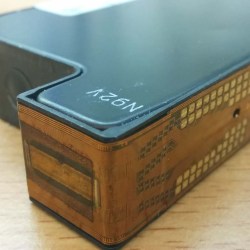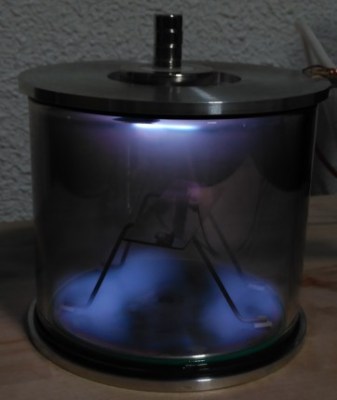Right now, we’re running the greatest hardware competition on the planet. The Hackaday Prize is the Academy Awards of Open Hardware, and we’re opening the gates to thousands of hardware hackers, makers, and artist to create the next big thing.
Last week, we wrapped up the first challenge in this year’s Hackaday Prize. We’re now happy to announce twenty of those entries that have been selected to move to the final round and have been awarded a $1000 cash prize. Congratulations to the winners for the Open Hardware Design Challenge portion of the Hackaday Prize. Here are winners, in no particular order:
Open Hardware Design Challenge Hackaday Prize Finalists:
- PR-Holonet: Disaster Area Emergency Comms
- ROPS
- I2C Encoder V2
- The Metabolizer
- Hack a $35 Wearable to Build Mental Health Devices
- Intraoral Respiration Monitor & Overdose Detector
- Arcus-3D-P1 – Pick and Place for 3D printers
- Reflowduino – Wireless Reflow Controller Ecosystem
- Compact, $25 spectrometer
- Kite : Open Hardware Android Smartphone
These projects are fantastic

Just take a look at these projects. They are the best of the best, and there’s still more to come. We enjoyed seeing projects that repurpose off-the-shelf technology to vastly extend the capabilities of home manufacturing with the Oasis 3DP. This project from [Yvo de Haas] takes ink cartridges from HP printers and uses it to build a powder-based 3D printer. That’s something that really hasn’t been done in the world of homebuilt 3D printers, and the Oasis 3DP already has working hardware. It truly is one of the more interesting projects we’ve ever seen, and not just because [Yvo] is dealing with dozens of tiny micro pumps squirting binder out of microscopic nozzles.
But that’s not all. There were hundreds of projects entered in the Hackaday Prize for this round, and our only regret is that we could only pick twenty winners for the Open Hardware Design Challenge. Just check out Semiconductors @ Home, a project from [Nixie] — it’s a project trying to make sand blink. [Nixie] is building all the tools to make semiconductors at home. Being able to build a simple FET is amazing, and to do that you need a fume hood to contain the dangerous hydrofluoric acid, a vacuum chamber for sputtering deposition, and a fancy oven with a controlled atmosphere. These tools are [Nixie’s] entry in the design challenge. This isn’t your garden variety hardware hacking; this is advanced hardware hacking.

Not impressed with DIY semiconductors? You’re a terrible person, but okay. How about an easy way to read rotary encoders? [fattore.saimon] and [Atikaimu] are building an I2C Encoder, an easy way to read multiple rotary encoders with just two microcontroller pins. Reading rotary encoders is one of the deceptively difficult tasks in electrical engineering; you really need some interrupts to do it right, and a microcontroller really only has a few of those to spare. [fattore] and [atikaimu]’s project does away with that problem, and puts rotary encoders on a board that can be read with a normal I2C bus. This means anyone can add a dozen rotary encoders to any project easily. Did anyone say MIDI controllers? Yes, that is possible. Everything from musical instruments to impressive control panels is possible with the I2C encoder, and it’s all Open Hardware.
Are you still not entertained? [Carl Bugeja] built a motor out of a PCB. Over the last decade, the price of custom fabricated printed circuit boards has dropped precipitously, and that means anyone can experiment with copper foil and fiberglass. [Carl] figured that since you can put coils on a PCB, you could also make a motor. While we’re only looking at a 1 Watt motor here, this is a brushless motor made out of printed circuit boards. It’s amazing, you’ve never seen it before, and we have absolutely no idea how many uses people will find a use for this amazing technology.
These are the winners of the Open Hardware Design Challenge in the Hackaday Prize, and we have a fondness for Open tools that are capable of building even more open hardware. If you want an example of that, you need only look at the Arcus-3D-P1 from [Daren Schwenke]. This is a project to add a lightweight pick and place head to any 3D printer. Below a certain size, a pick and place machine is necessary to create electronics, and almost everyone has a 3D printer these days. The Arcus-3D-P1 is an attachment for any 3D printer to turn it from a CNC hot glue gun into a machine that builds electronics. It’s Open Hardware, and hardware that creates hardware. It’s astonishing, and it’s happening on Hackaday.io.
Congratulations to all who entered the first challenge, and the twenty excellent entries that are moving to the finals. We can’t wait to see what other projects will make it to the finals in the Hackaday Prize, the greatest hardware competition on the planet.
Who will win the 2018 Hackaday Prize?
Who will win the Hackaday Prize? These finalists in the Open Hardware design challenge are now in the running for the final round of the Hackaday Prize where they will have the chance to win the Grand Prize $50,000 USD. That doesn’t mean you still can’t get in on the action; there are four more challenges left in the Hackaday Prize.
Right now, we’re in the middle of the Robotics Module Challenge, and after that, we’ll launch into the Power Harvesting Challenge, the Human Computer Interface Challenge, and finally the Musical Instrument challenge. There’s still time to win your place among the hardware greats, so start your Hackaday Prize entry now.



















Yay!
These projects are EPIC
Congrats to the winners! All well-deserved!
Congrats! It’s hard to come up with a cool project, let alone document it up for submission. These all look super and a few of them I’m jealous I didn’t come up with myself. I can’t wait to see how these projects progress.
PCB motors also known as pancake motors were the new hotness when I was at school. https://en.m.wikipedia.org/wiki/Electric_motor#Pancake_or_axial_rotor_motor It’s nice to see that small run PCBs make them practical for hobbyist experimenters. I’m going to make some now.
Super kicked to see my own project in this list (shameless plug) – Kite : Open Hardware Android Smartphone!
20 instances of “secure connection failed” in my browser.
Congrats to all the winners!
PR Holonet project is AMAZING!! It’s a project that not only will help Puerto Rico, but it will serve as a prototype for any otherplace that might have similar needs!
Much of the USA is prepared or preparing to use first net, that adds the ability of sending of photos and video. Just like this project, just like first net depends on infrastructure surviving an event.
Congratulations to All winners. My project, just what I expected, Nobody understood except one person who ran the contest.
Congrats to all the finalists! Truly inspiring projects – I’m not surprised my project didn’t make the cut given the level of these, but still happy to have been considered! Good luck to all!
Thank you!!!
Congrats to all the finalists!
Congratulations Shree
Congratulations everyone !
“Right now, we’re running the greatest hardware competition on the planet.”
Methinks the U.S. Department of Defense has been running that particular contest since the 1960s.
Beauty of a government budget.
Most likely much earlier than that. The jeep was the result of a competition, as where many aircraft.
Being involved in amateur radio provided EMCOMM PR-Holonet got my interest. Despite the claim tothe contrary it appears to me this depends entirely working power or comms infrastructure, it appears this is entirely dependent on those being in place. That I interpreted the illustrations completely backwards.
“It is built to support response and relief efforts to natural disasters by:- first responders…” The people who own the infrastructure that this project use have deployed first net starting several years back. https://www.firstnet.gov/ no doubt Puerto Rican officials will adopt it at some point. When they do I don’t see what advantage PR-Holonet would have. Perhaps the write up created an expectation of seeing hardware that could be used when when when normal infrastructure was down, and was disapointed when I seed a protocol that uses cellular networks, the internet and sat phones, that may not be available after an incident.